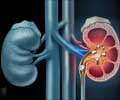What is Cystolitholapaxy?
Cystolitholapaxy is a surgical procedure where stones in the urinary bladder are broken down into pieces. The procedure is carried out with an instrument called a cystoscope that is introduced into the urinary bladder either through the urethra (referred to as transurethral cystolitholapaxy) or through an incision in the abdomen (percutaneous cystolitholapaxy).
Stones in the urinary tract are a common problem. The stones are accumulations of minerals that form due to a high concentration of the salts in the urine, an obstruction to the outflow of urine or the presence of an infection. Calcium oxalate and calcium phosphate stones are the most common though other stones like uric acid, cysteine and struvite stones can also develop.
A urinary bladder stones may form in the bladder or it may originate in a kidney, from where it may move into the bladder through the ureter and slowly grow in size. It may result in symptoms of pain while passing urine, increased frequency of urination, and obstruction to the free flow of urine, sometimes along with nausea, vomiting, fever and chills. The urine may test positive for the presence of blood or an infection.
Why is Cystolitholapaxy done?
Cystolitholapaxy is done to break down large stones in the urinary bladder into smaller pieces so that they can be easily removed. The procedure is done with the help of a cystoscope, a telescope-like instrument that can be introduced into the bladder, and enables direct visualization of the interior of the bladder and the stone. The procedure may not be the best choice if the stone is too large of if there are too many stones. In such cases, an open surgery may be preferred.
Depending on the route by which the cystoscope is introduced into the urinary bladder, cystolitholapaxy can be classified into two types:
- Transurethral cystolitholapaxy: In this procedure, the cystoscope is introduced into the urinary bladder through the normal passage of the urethra. This procedure is usually preferred since it has the option to be performed under spinal anesthesia and avoids the need for surgical incisions, as a result of which the post-operative pain is less and the recovery is faster.
- Percutaneous cystolitholapaxy: In this procedure, the cystoscope is introduced through small incisions in the abdomen and the urinary bladder. The procedure is usually preferred in young children, in whom the urethra may be too narrow to pass the cystoscope, or in adults with moderately large stones that may be difficult to deal with through the transurethral procedure. This approach is associated with more postoperative pain and longer recovery time as compared to the transurethral approach.
How do you Prepare Before Cystolitholapaxy?
Your doctor will first confirm the presence of a urinary bladder stone through several tests. These may include:
- Ultrasound: An ultrasound is a painless test that can show the presence of a stone in the urinary tract. Images are viewed on a screen. Ultrasound, however, cannot detect all types of stones.
- CT scan: A CT scan may be more accurate in diagnosing a kidney stone. You will have to lie on a table, while a doughnut-shaped instrument passes over your lower abdomen. Images are obtained which are analyzed on the screen and can be printed on a film.
- Urine tests: The urine test may show the presence of high concentration of minerals and crystals that may lead to stone formation. It may also test positive for the presence of blood in the urine. A urine infection should be ruled out prior to the procedure though a urine routine and microscopic examination and a urine culture. If present, the infection should be treated before the procedure.
- Blood tests: Blood tests may reveal high content of certain substances. For example, patients with uric acid stones may also have high uric acid levels in the blood.
Routine tests: Routine tests, which will have to be done before the procedure, include:
- Blood tests like hemoglobin levels, blood group, and liver and kidney function tests
- Electrocardiogram (ECG) to study the electrical activity of the heart
- Chest x-ray. In older patients, a detailed assessment of the heart may be required to make sure that they are fit for surgery
Type of Anesthesia: The transurethral procedure is done either under general or spinal anesthesia. The percutaneous procedure is done under general anesthesia. If you undergo general anesthesia, you will be asleep during the procedure and will not be aware of what is going on. If you undergo spinal anesthesia, you will not be able to feel any pain waist downwards or move your legs, but will be conscious during the procedure.

Pre-operative Check-up: Routine tests as indicated above are ordered a few days before the surgery. Your doctor may advise you to stop medications like aspirin for around a week prior to the procedure. Admission is done on the day of the procedure. Overnight fasting is usually required. Informed consent is obtained.
Shift from the Ward To the Operating room: An hour or two before the surgery, you will be shifted to the operating room waiting area on a trolley. Once the surgical room is ready, you will be shifted to the operating room.
Anesthesia before Procedure: During general anesthesia, the anesthetist will inject drugs through an intravenous line and make you inhale some gases through a mask that will put you in deep sleep. Once you are asleep, a tube will be inserted into your mouth and windpipe to administer the anesthetic gases to overcome pain and keep you comfortable while the surgery is going on. If you undergo spinal anesthesia, you will receive an injection in your back during which an anesthetic will be injected into the fluid surrounding your spinal cord. Following the injection, you will feel numb from your waist downwards. For the transurethral procedure, you will be placed in a lithotomy (legs flexed at knee and spread apart) position on the table, with your legs supported on stirrups for the surgery. For the percutaneous procedure, you will be made to lie on your back.
What Happens During the Procedure?
Cystolitholapaxy is performed with the help of a cystoscope, a telescopic instrument that enables visualization of the inner aspect of the bladder. It is introduced into the urinary bladder through the urethra, or through an abdominal incision.
During the transurethral procedure, the cystoscope is introduced through the urethra and the inner surface of the bladder and the stone are inspected. An instrument that emits radiations like a laser or an ultrasound waves or a jaw-like instrument that grasps and mechanically crushes the stone is inserted through the cystoscope, and the stone is crushed into pieces. Some of the fragments can be grasped with the jaw and removed through the cystoscope, while the remaining are removed through irrigation and suction. The larger pieces are sent for chemical examination. Once the procedure is complete, the cystoscope is removed and a Foley’s catheter is kept in place to continuously drain the urine into a bag that can sometimes be strapped to your leg so that you can move freely. The catheter and bag will remain in place for the next few days.
In the percutaneous procedure, an incision is made in the lower abdomen and the urinary bladder, through which the cystoscope is introduced into the bladder. The stones are then crushed and removed in a similar way as the transurethral procedure. Once the procedure is complete, the cystoscope is removed, the incisions are closed, the Foley’s catheter is introduced through the urethra and is attached to the urinary bag to continuously drain the urine.
What Happens After the Cystolitholapaxy?
Waking up from General Anesthesia: Once the surgery is over, if you have received general anesthesia, you will wake up from your anesthesia and the tube down the wind pipe will be removed. Once fully awake, you will be shifted to the recovery room. If you have received spinal anesthesia, you will start feeling sensations in your legs and will be able to move them as the effect of the anesthetic wears off.
Recovery room: In the recovery room, a nurse will monitor your vitals and observe you for an hour or two before shifting you to the room or a ward.
Post-operative recovery:
- You will be encouraged to drink a lot of fluids once you are comfortable.
- Antibiotics will be prescribed to prevent infection and pain relievers to reduce pain if present.
- The urine passed through the Foley’s catheter may initially contain some blood following the surgery, which usually clears up in due course.
- You will be encouraged to move around as soon as possible.
- You may be allowed to go home the same day if you have undergone the transurethral surgery.
- You will be instructed about how to empty and take care of the bag before you leave the hospital.
- You will be called back in two to three days for the catheter removal. You may also be called in to remove the stitches in case you have undergone the percutaneous procedure.
- You can resume most of your activities once you are comfortable. Restrict heavy activities till you recover completely and follow up with your doctor on a regular basis as advised.
- Your doctor will also advise you dietary and other measures to prevent the formation of new stones, depending on the type of stone and its possible cause.
What are the Risks & Complications of Cystolitholapaxy?
As for any surgical procedure, cystolitholapaxy can be associated with complications which may include the following:
- Trauma to the bladder mucosa, the inner lining of the urinary bladder. The procedure could sometimes result in perforation of the urinary bladder.
- Urinary tract infection. Antibiotics are usually prescribed to prevent urinary infections.
- Bleeding. Some amount of bleeding will be noted in the urine bag after the surgery, which usually subsides after a couple of days. If the urine continues to be bright red, consult your doctor.
- Difficulty in passing urine or increased frequency of passing urine soon after the procedure
- Narrowing of the urethra due to tissue damage and subsequent scar tissue formation
- Unsuccessful procedure or recurrence of the stones which might require an open surgical procedure in the future
- General complications due to anesthesia or surgery like deep vein thrombosis.









